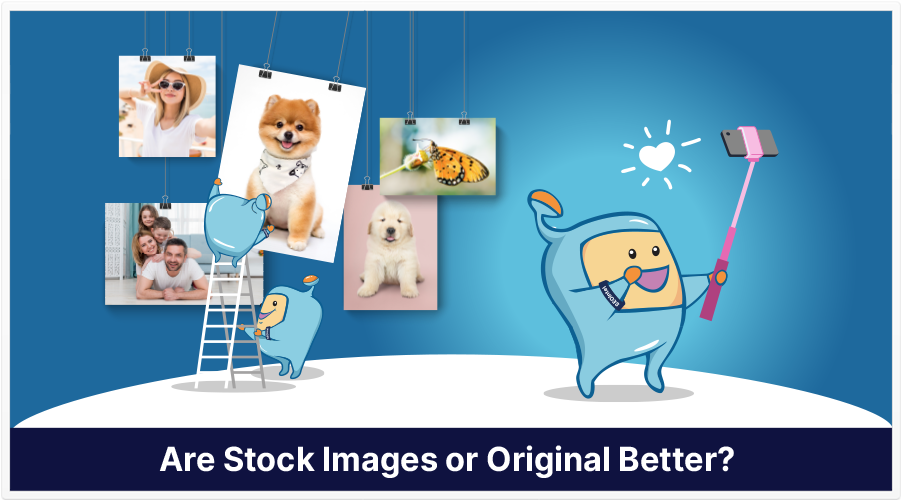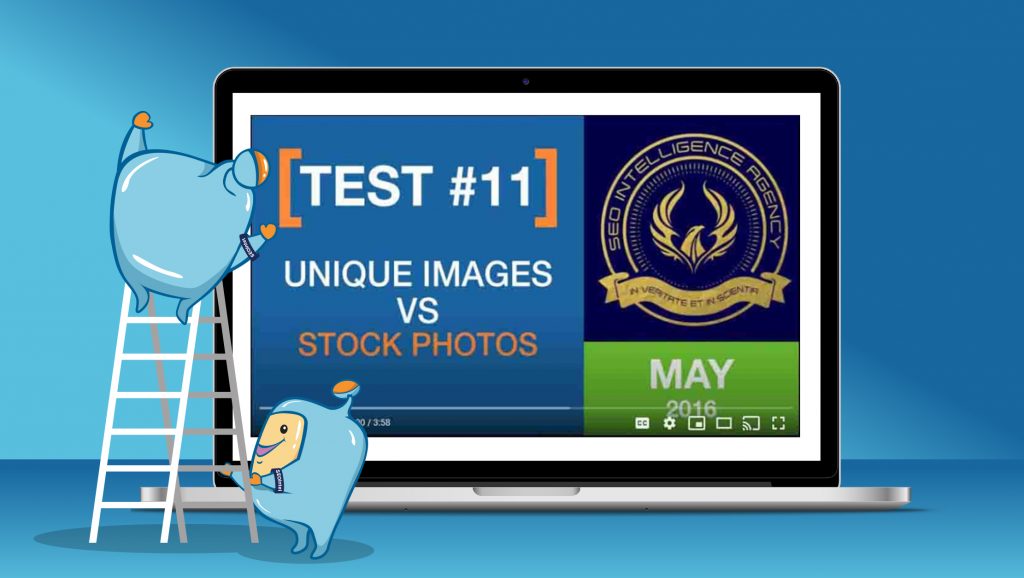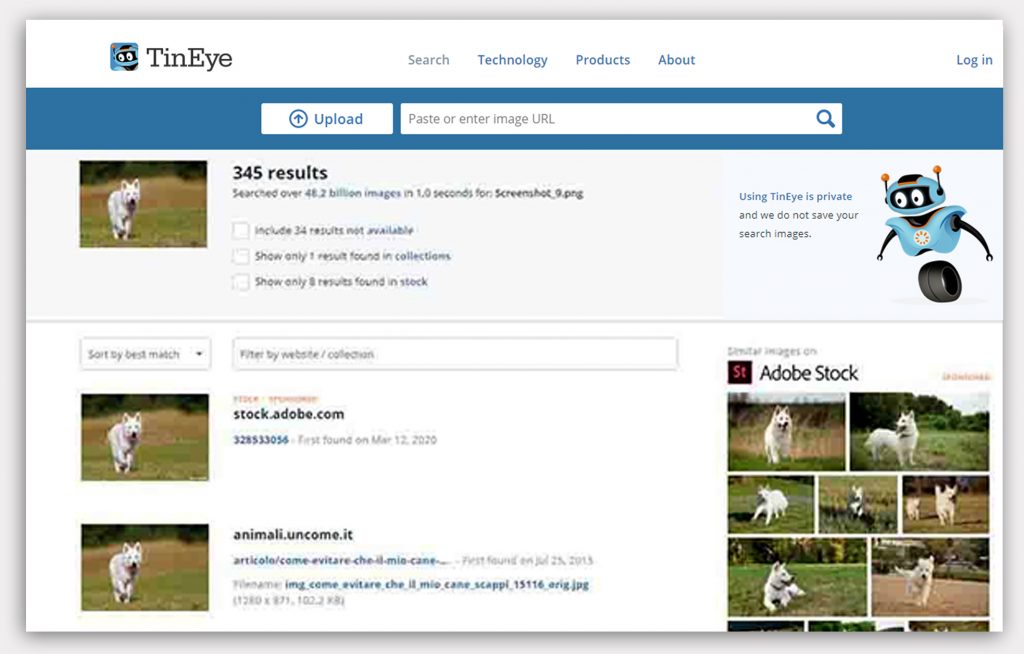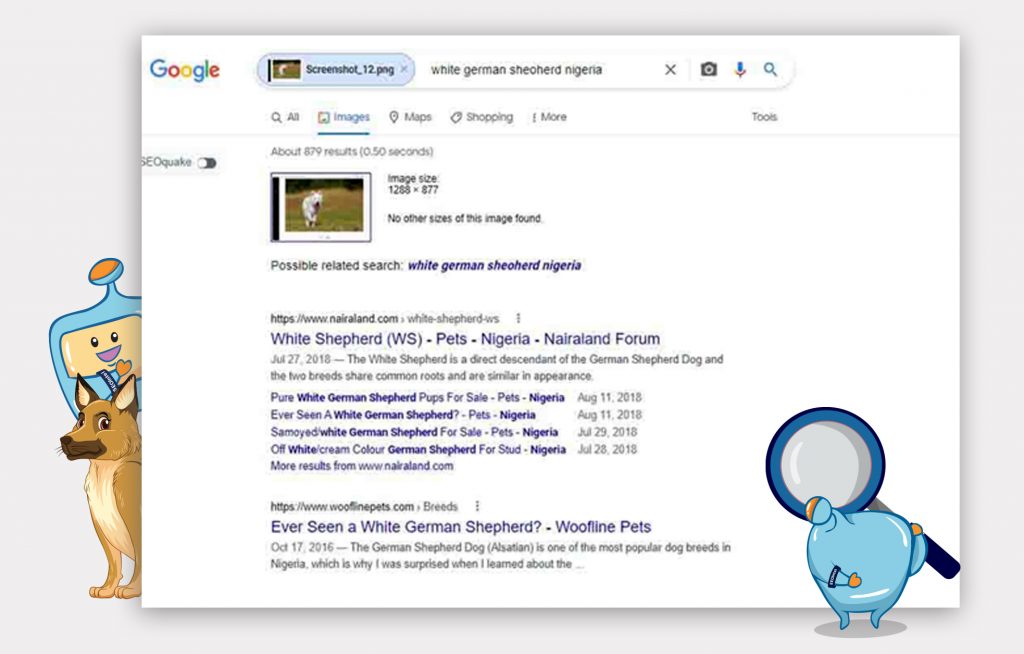
The question and topic of this article, “What is better for SEO, using stock images or original images?” is often asked.
The answers received when researching this question on Google oftentimes are just repeats of what others say without offering any empirical data or the studies have flaws in their experimental design. In addition, the data simply is inconclusive.
In this article you will learn what studies have been performed and the answers they reveal.
The terms images, photos and photographs will be used interchangeably in this article. Although technically photographs are a subset of images as images could also be graphs, tables, drawings, etcetera.
Original photos in the context of this article are photographs taken specifically for and of a business, and are unique to the business, like a photograph of the outside or inside of a specific restaurant. When taken by a professional photographer, they are high-quality and unique.
However, the market for stock images and videos has skyrocketed over the last decade or so due to the proliferation of digital cameras and the explosive popularity of the internet.
Its international market value is projected to reach $4.43 billion by 2025 according to Arizton, a respected market research company, indicating many people are using stock images and the projections show the market continuing to grow.

Figure 1: Continued Growth Forecast for the stock images market through 2025.
Stock photos are photographs taken by professional photographers and placed online for others to purchase or use according to a specific license type.
Photographers typically use a third-party agency to pair buyers with sellers to sell their photographs. These agencies charge a commission for their service.
A description of common license types is beyond the scope of this article, but a good explanation can be found here.
The use of stock photos has both advantages and disadvantages. Stock photos are advantageous in that they are much less expensive to use in terms of both time and money, especially if you are using a professional photographer to take your original photos.
Stock photos can be found and downloaded immediately after a quick search on Google image or by visiting any of the numerous stock photo agencies.
A major disadvantage of using stock photos is that they are not exclusive, can be used many times on different websites and therefore lack uniqueness.
Another disadvantage is that many stock photos look “staged” or are easily identifiable as stock photos which may alter the readers perception of the authenticity of the image and the website itself.
An extreme example of stock photo overuse is “The Everywhere Girl”, Jennifer Kind, who in 1992 posed for some stock photographs shortly after graduating from college.
At that time people who subscribed to stock photo agencies received them on CD Rom. Her nickname was well-earned as her photos went viral and started showing up, well everywhere. Figure 2 below shows just some of those places.
Interestingly, her photo in the lower left corner was used in ads at the same time by two competing computer makers.

Figure 2: The Everywhere Girl’s (Jennifer Kind), photographs in 1992 showing up on ads and book covers all over the place.
Figure 3 shows a case where original photos are more appropriate than stock photos. This is a photo of the creative department at Intechnic.
It is a no-brainer that the original photo on the left is more attractive, especially for their creative department. The photo on the right is easily identified as a stock photo and is much less interesting.

Figure 3: Intechnic.com’s creative department photo on the left is clearly a winner over the stock photo on the right.
Figure 4 shows an example of a hybrid situation where a stock photo was branded and made into a creative original photo.
The left side shows the original stock photo, while the right side shows the new photo with branding and significant changes including moving the glass of milk to the side, changing the background to black, and adding type and branding.
The individual photos from the composite came from here.

Figure 4: This shows a hybrid type file on the right where the stock image on the left was customized into an original unique photo by altering it.
Whether images are stock or original they always should be used on websites, blogs, etcetera. When used properly they improve the user experience by reinforcing, providing additional information and clarifying the current topic.
By providing relevance, they engage, and attempt to elicit an emotional response from the reader.
So, should stock images be used on websites? The answer is a resounding YES in certain situations and provided they meet the criteria given above.
Stock photos were defined previously, so now it is time to define SEO or search engine optimization. This is the process by which a webpage is modified to give it the best chance of ranking high in the SERP (search engine results page) when search is made.
In the US, Google is the most used search engine by far, getting about 85% of mobile traffic followed by Bing and Yahoo.
Search engines work in a three-step process.
– Firstly, by sending bots throughout the internet to find webpages.
– In the second step those pages are categorized, indexed, and the information stored in a gigantic database.
– The third step occurs when someone initiates a search query. This is when the search engine’s proprietary algorithm springs into action to rank the webpages and serve up the best pages that answer the query to create the best user experience possible. The pages that are served up are called SERP.
The objective of SEO is to get as much traffic as possible to your website. The closer your website gets to the number one position, the better chance it will get clicked, receive traffic, and ultimately convert.
Joining the terms stock photos and SEO means modifying your website images, so they help your entire webpage rank higher on the SERP.
Our previous article, “What Is Image SEO”, explained in detail how to optimize your images using Image SEO.
The short answer is yes, stock photos can affect rankings, but not in the direction you may think.
Back in May 2016, the SEO Intelligence Agency (Test #11) tested this question using a single-variable, experimental design by creating two identical webpages except one had a stock photo while the other had an original image.
Both were optimized for the same fake keyword, submitted to Google, and allowed to rank. Surprisingly, the webpage with the stock photo consistently outranked the original photo.
Because Google’s algorithm is constantly changing, in April 2020, SIA retested (Test #448) and found that stock images rank just as well as original images.

Figure 5: SEO Intelligence Agency Test #11 Unique images vs stock photos
However, John Mueller, Google’s Senior Webmaster, said when recently asked on Twitter if using stock photos influences website rankings, not directly.
Later he elaborated saying it may influence Google Image search if the photo is used many times.
Using the guidelines below for your images will give you the best SEO results:
The use of stock images for SEO should start with the bullet points given in the section above, “What we know about images and SEO”. But since stock images are not exclusive, it is a good idea to check how many times they have been downloaded or used online.
Most image agencies have the number of downloads right by the photo.
Figure 6 shows an image of a white German Shepherd dog running while carrying a toy which was downloaded from pexels.com.
It is a free stock photo under the CC0 license which is clearly marked. The image shows it has been viewed 21,700 times but does not give how many times it has been downloaded.

Figure 6: Free stock photo of a white German Shephard dog running in a field carrying a toy which is used to test its internet usage.
One can check for a photo’s use online with TinEye.com, a reverse image look-up website as shown in Figure 7.

Figure 7: Reverse photo look-up of white German Shephard dog using TinEye.com 345 results.
Even though this photo has 21,700 views on pexels.com, when you do a reverse look-up using TinEye.com, Figure 7 shows there were only 345 images found online.
The same image also was tested for online presence by dragging the image into Google Images which yielded 879 results (Figure 8), over 2.5 times as many instances.
This data suggest that before choosing a stock image check both websites as they can provide vastly different results.
If an image is used online many times, it may be prudent to chose a different image.

Figure 8: Reverse photo look-up of white German Shephard dog using Google Images yielded 879 results.
It has been suggested that changes made to stock images may help them rank better as it is more likely that Google will consider them unique photos.
These changes include, making the photo unique, adding a keyword, flipping the photo, changing the background, creative cropping, and applying filters to the image.
Although I was not able to find empirical evidence of this, it does make sense and at the very least these changes will help make the photos look less like stock photos.
Figure 9 shows an excellent example of a stock photo made unique, the hybrid model we discussed previously.

Figure 9: Example of a stock photo altered to be unique. (Photo credit)
There is always the possibility that you could be sued for using stock images without purchasing them for use, using them outside the purchase contract limits, or failing to give proper credit.
Getty Images, one of the highest price photo agencies, has been known to vigorously pursue copyright infringement of their photographic assets. Even if a lawsuit is without merit, it can still cost you a small fortune to defend yourself.
This is a significant disadvantage of using stock photography.
The main takeaway here is to know what type of agreement the photo has and abide by it.
The bottom-line is that currently it is not known definitively whether stock or original photos perform better.
If performance is defined as SERP ranking, then the SIA Test #11 referred to in a previous section, does provide some evidence that stock photos outperform original photos.
Their subsequent Test #448 showed they both performed about the same.
If performance is defined as conversions, investigators using A/B tests have interpreted their results as original photos clearly outperforming stock photos.
However, these results may not be due to stock versus original photos, but simply the original photos being more interesting or more relevant than the stock photos.
A study published by MarketingExperiments.com in April 2012 titled, “This Just Tested: Stock Image or Real People?”, performed A/B testing on a digital advertisement of one of their clients, a debt relief company, to determine if an original photo would get higher conversion rates than a stock photo.
The A/B tested images used are shown in Figures 10 and 11.
Prior to this study, Figure 10, the stock photo of an attractive female had won all previous A/B challenges.
In the current test her photo competed against the company’s owner, the slightly overweight male in Figure 11.

Figure 10: Attractive female photo used in A/B test for conversions to compete with the company’s owner, an overweight male shown in Figure 11.

Figure 11: Slightly overweight male photo used in A/B test for conversions to compete with attractive female shown in Figure 10.

Figure 12: Result of the A/B test (Figure 10 versus Figure 11) for conversions
The results are given in Figure 12, which show that the owner’s photo outperformed the stock photo in conversion percentage by 35%, statistically significant at p< 0.05.
It is important to note that the owner “was highly recognizable for channels coming to the home page (television ads, news articles, etc.).”
They correctly interpreted the results, not as the article title suggests, stock image or real people, but as a stock image versus a familiar face (somewhat of a celebrity if you will).
I highly doubt that the results would have been the same had they used another person that worked at the firm who was not familiar.
However, this article has been used in the literature as proof that an original image will outperform a stock image.
In all fairness, it is difficult to set up an experiment to test a performance difference between these two types of photos. More research is required to find an answer.
Generic Stock Images to have some major advantages as listed in the bullet points below.
Figure X below lists the websites of some of the top agencies that offer free stock photographs.
This list was compiled from an article written by Mindy Weinstein, Ph.D. and published in SearchEngineJournal.com.

Figure 13: List of free stock image websites
Other agencies work on a paid basis, either subscription or pay-as-you-go. Typically, you pay a monthly subscription which entitles you to a specified number of monthly image downloads. Some of these websites are listed below.
Google has always wanted to provide a great user experience by serving high-quality webpages in their SERPs which includes both written and image content.
They do use image components to establish image content quality and relevancy as discussed in the previous section, “What We Know about Images and SEO”.
In early 2019 Gary Illes gave us a glimpse of what the future may hold for Google regarding image SEO when he held his first AMA (ask me anything) event on Reddit for SEOs.
He has worked for Google for about 10 years now and his official title is Chief of Sunshine and Happiness and Trends Analyst.
Recently his focus has been on images and videos. A transcript of the AMA is here.
Some important points from that event are given below:
Camille Croteau wrote a great article about images and SEO, particularly the section on her beliefs of what the future holds for image recognition and categorization. This allocation of more assets to which Illes refers is most likely Google’s Vision AI.
It is an amazing tool which can be trained recognize objects, to read and understand text in images, and identify a person’s emotions. You can test out the demo here.
The bottom line is that in the future Google most likely will be able to determine many aspects of your photos including whether they are stock or original, what objects they contain and most importantly, their relevance.
So, if your website has only stock images, is it worth your time and effort to optimize them?
Probably yes, but it may be prudent to start swapping them out for original photos or make some of the changes noted above.
Based on our current knowledge of SEO, it probably makes little difference if you use either original photos or tweaked stock images.
Stock images that have that tell-tale “stocky” look should be avoided.
The real take-away is to be sure to use high-quality, relevant images that are optimized for SEO and generate an emotional response from the reader.
.